Slugs (Corn)
Primarily Deroceras spp.
Search the Pest & Crop Newsletter
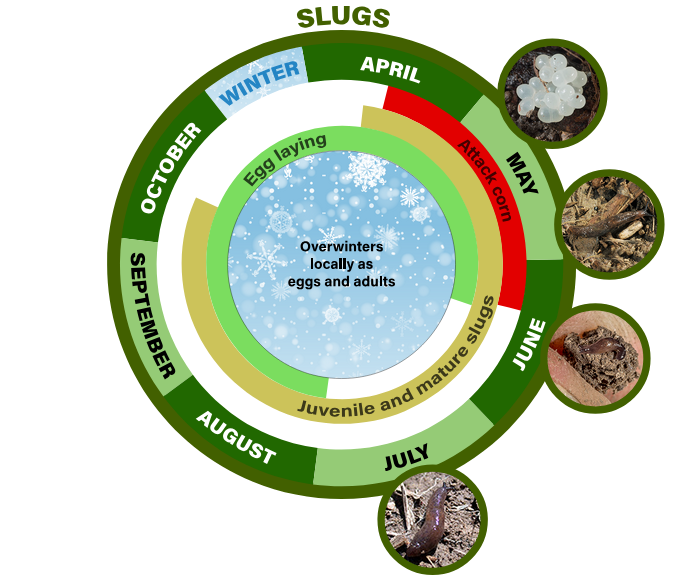
The ability to see these full-sized life-cycle images is currently disabled to resolve an issue.
Related Video Resources:
Appearance and Life History
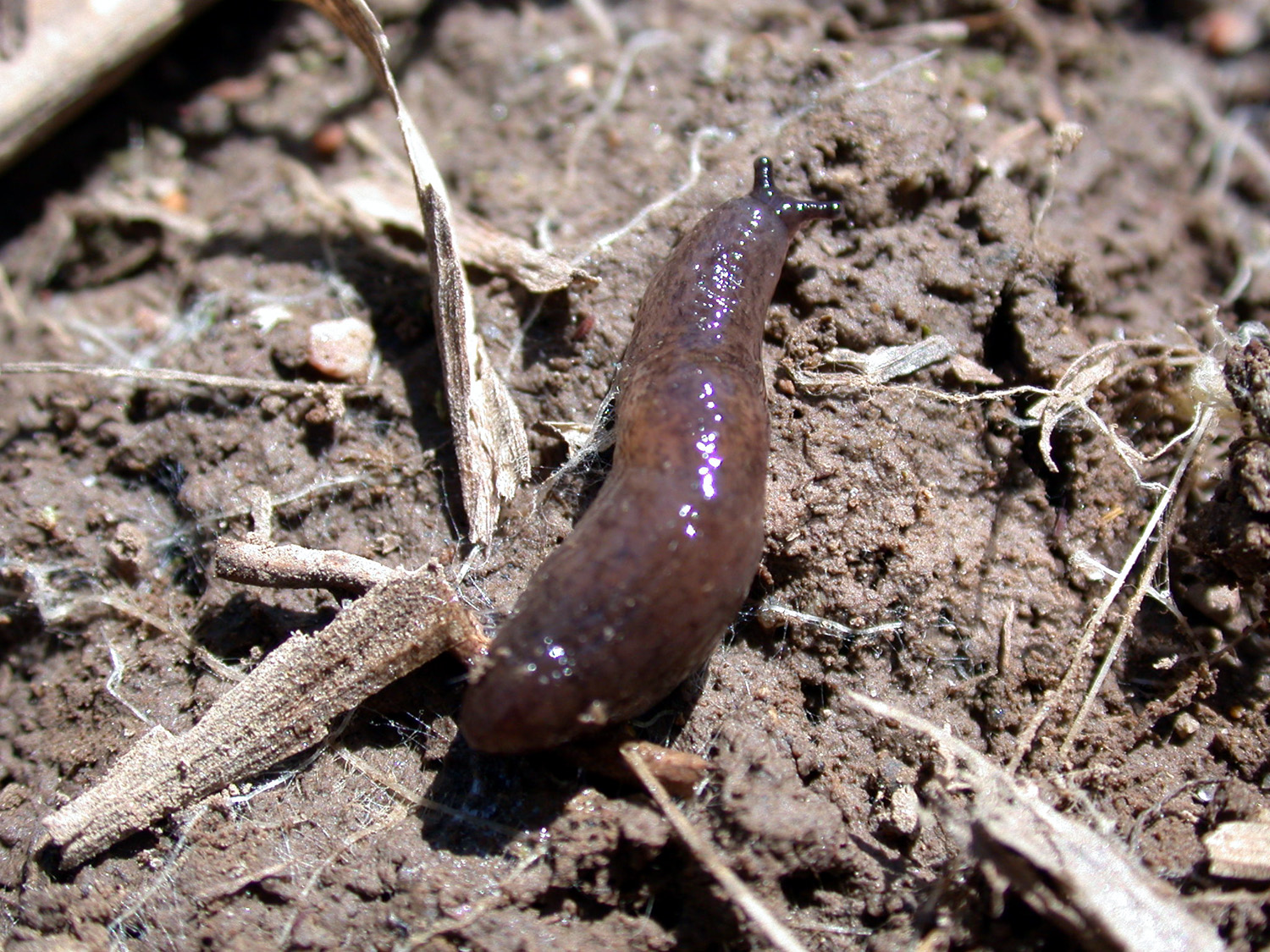
Photo by B. Christine
Slugs are found throughout the eastern United States in almost every cropping system and feed on decaying organic matter and plant foliage. Their activity is favored by plant residue on the soil surface and moist conditions.
Slugs are soft-bodied, legless, slimy, white, brown, gray, or black gastropods (not insects). Some species measure up to 4 inches (10 cm) in length, but 1/2 to 1-1/2 inches (13 to 38 mm) are more common. In the spring, translucent round eggs are laid in masses in damp and protected places. The eggs hatch in about a month depending on temperature and moisture levels. Juvenile slugs are similar to mature slugs except for size. They develop slowly and live for a year or more.
Slugs overwinter as both adults and eggs in the Midwest. Buildup of slug populations is greatest in reduced or no-till systems and where high amounts of soil surface residues, e.g. cover crops, and moisture favor their development.
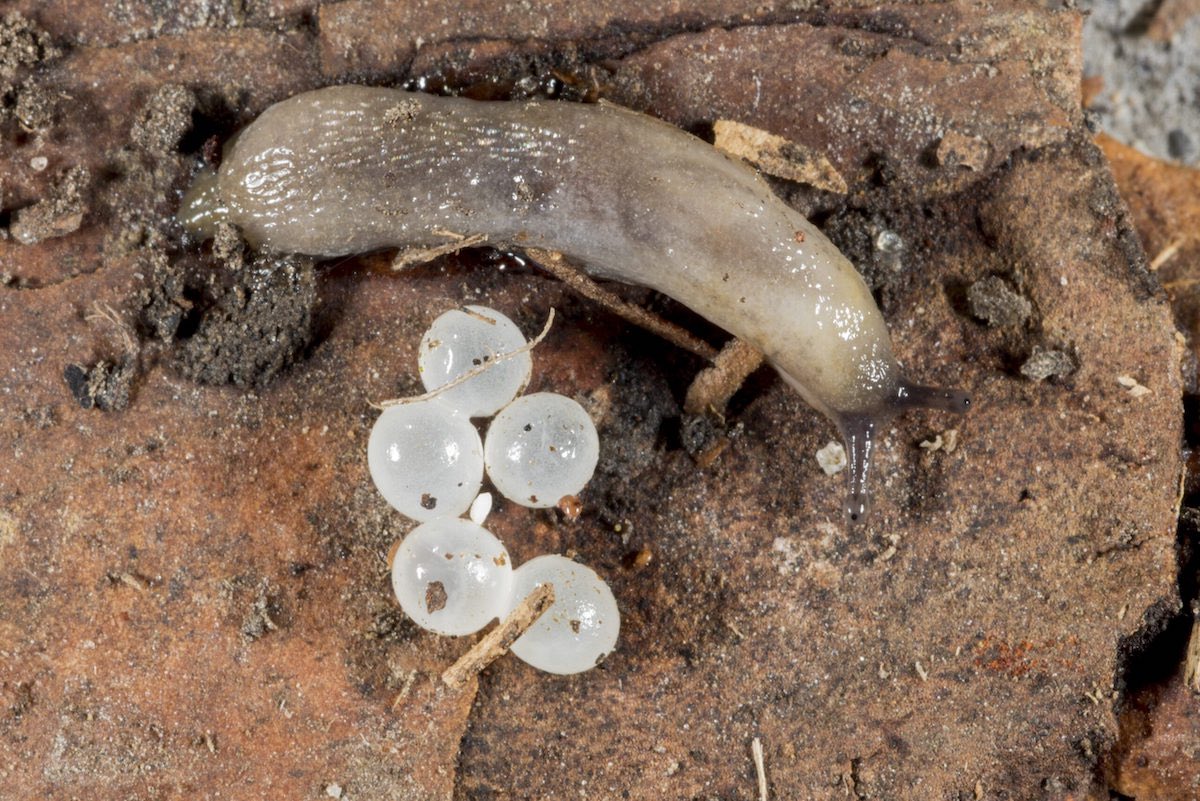
Photo by J. Obermeyer
Damage
Slugs usually feed on the lower part of plants, eating partly or completely through the leaf. They leave narrow, irregular, linear tracks or scars of various lengths. Severe feeding can result in split or tattered leaves that resembles damage from hailstorms. The damage they cause is similar in appearance to that caused by some insects (eg., corn flea beetle), but the presence of silver-colored slime trails is a sign of the presence of slugs. Normally, damage is severe only on emerging to four-leaf stage corn. Stand losses due to slug feeding often occur when fields are too wet for seed slots to properly close during planting operations and remain open during early plant growth.
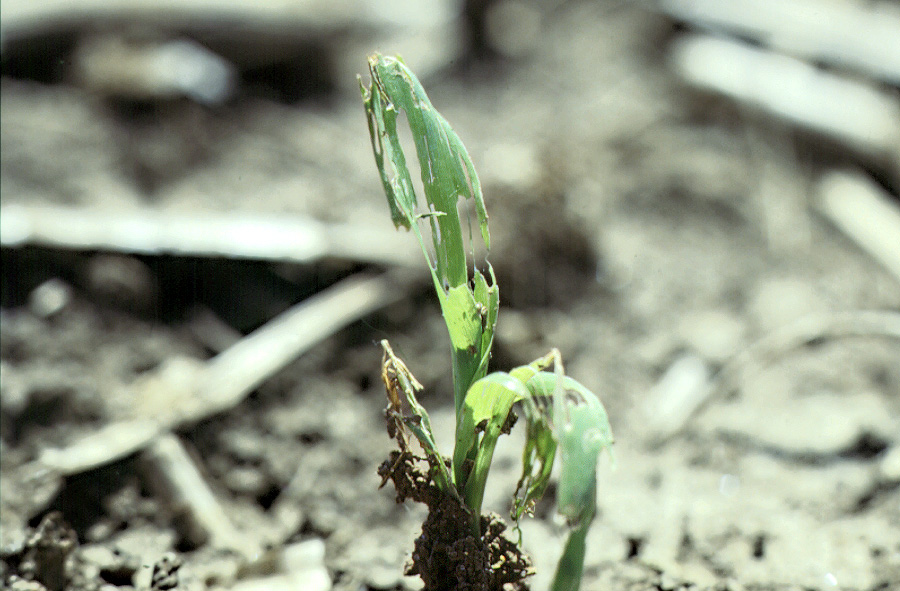
Photo by J. Obermeyer

Photo by L. Bledsoe
Sampling Method
- No-till/reduced-till, cover crops, and weedy fields should be closely watched.
- If damage is suspected or seen, check 20 plants in each of 5 areas of the field.
- Record the number of plants showing leaf feeding and/or being killed and a rough estimate of the percentage of defoliation.
- Carefully inspect under residues and soil clods for the presence of slugs. Look for their slime trails.
Management Guidelines
Corn Insect Control Recommendations:
- Reducing crop residue in slug-history fields by using some form of tillage discourages their buildup. Zone tillage or row sweepers at planting may reduce slug damage by encouraging corn growth and soil drying. Early planting and crop emergence before the spring egg hatch will allow most seedlings to get beyond corn’s vulnerable stage. However, this practice will only be successful if soils are suitable for planting. Poorly sealed seed slots can result in severe slug damage and crop stand losses. Where replanting is necessary, the field or area damaged should be tilled first to disrupt the slugs’ environment.
- There are no established rescue treatments for slug control. However, if corn leaves are being significantly defoliated, the field is taking on a grayish cast, and the plant stand is being threatened, control is warranted if the slugs are still present and feeding and weather conditions (moisture) still favor slug activity. Insecticides do not normally control slugs since the slime they produce forms a cover of protection against many toxicants. Pelleted chemical baits are available for slug control, although difficult to apply uniformly and may only provide suppression.

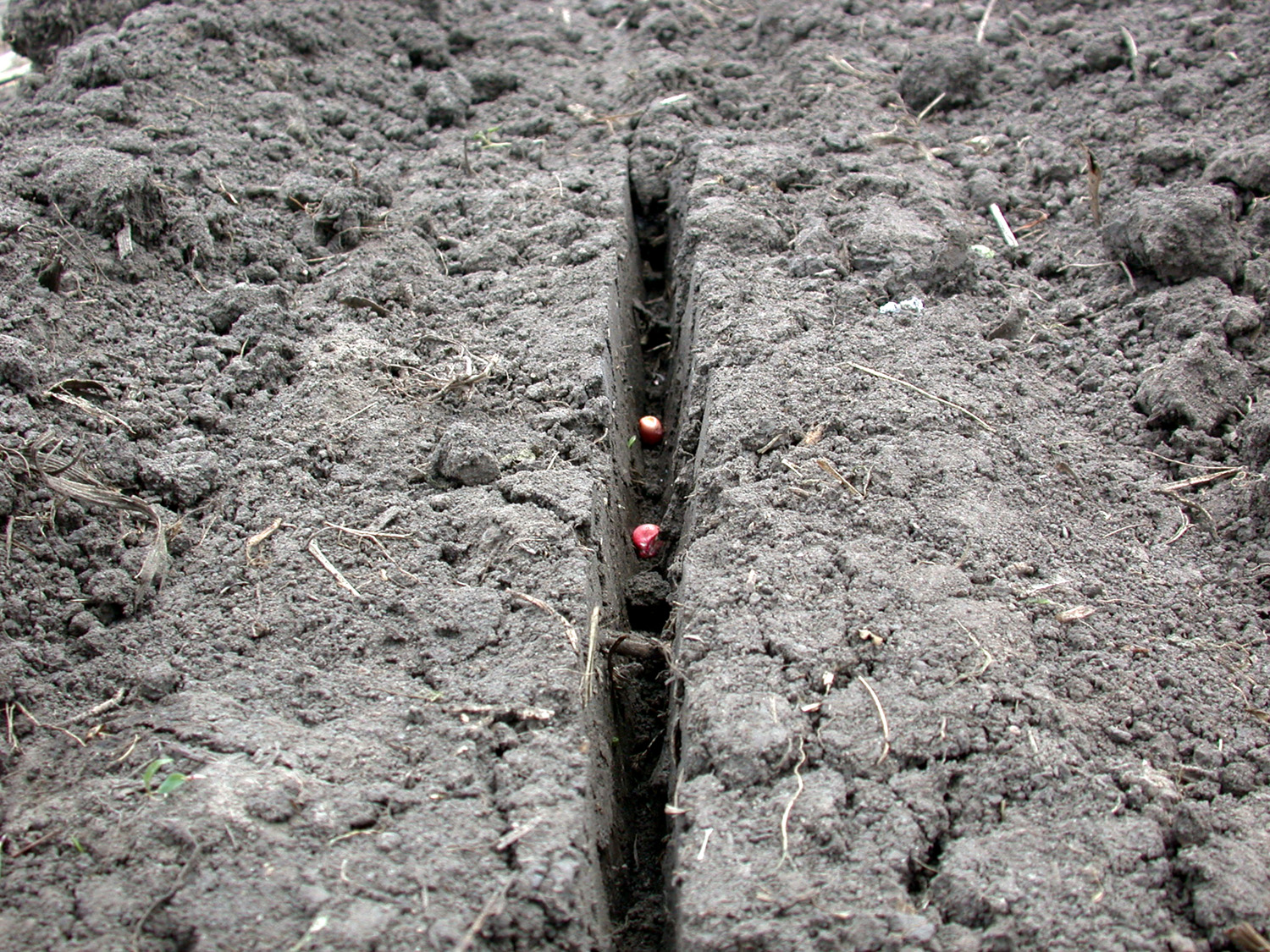
Photo by J. Obermeyer
Properly sealing the seed slot at planting may prevent slugs from killing corn seedlings.
